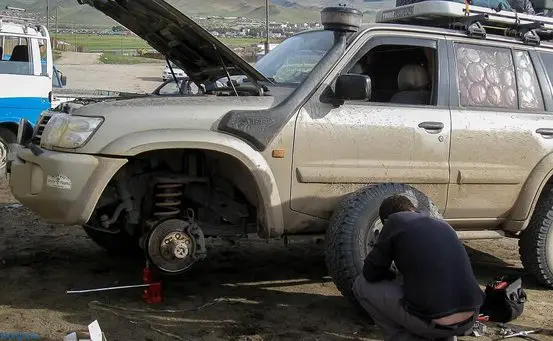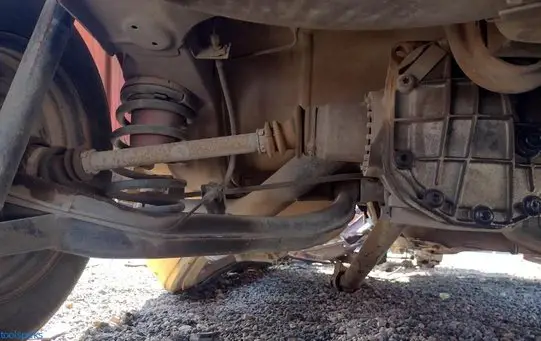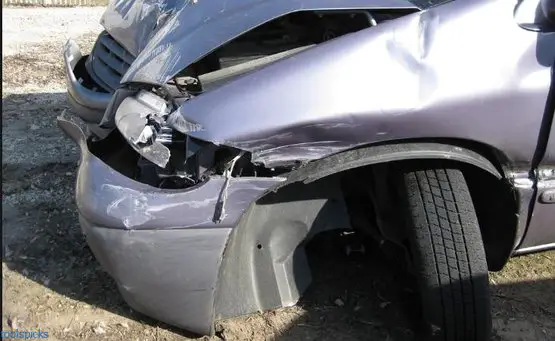A well-functioning suspension system is crucial for holding your car up, keeping rides comfortable, and for efficient handling. While your car suspension system is not designed to last forever, it should last up to 50,000 miles with proper maintenance.
However, it can get damaged sooner depending on how well you maintain it and other systems of the car, your driving style, and the type of terrain you regularly drive on. Below is a look at the top causes of suspension damage.
Top Causes of Suspension Damage
Poor Suspension System Maintenance
Many people neglect suspension system maintenance. You find that a car has the same suspension system parts it came with even after covering tens of thousands of miles.
Ideally, shocks, struts, bushings, airbags, etc., should be replaced with new ones every 30,000-50,000 miles. It is recommended to inspect or have your mechanic inspect the suspension system with every oil change and replace any parts that show signs of wear and tear.
Have a mechanic check the steering fluid or belt to see if your car has a hydraulic powering steering mechanism. The fluid may need to be topped up or replaced, while the belt may need to be tightened.
Wear and Tear of the Suspension System
Car parts are not designed to last forever. Over time they become “fatigued” from continuous use and impact. Usually, metal alloys used in making the suspension system have elastic strength that enables them to withstand impact.
However, over time, they lose the elastic strength from bending, impact from rock, stones, and debris, or chemical reactions. The loss of integrity compromises the efficiency of the suspension system.
As such, your suspension system is inevitably prone to wear and tear. It comprises numerous parts and requires regular inspection and repair or replacement. Some parts most prone to wear and tear include springs, shock absorbers, linkages, bushings, bearings, joints, etc.
Salt and Moisture
If you live in parts of the U.S that are considered salt-belt states, the metallic parts of your suspension system are prone to rust. The local government often sprays salt on snowy roads to clear the ice to make roads safer during winter. The salt and melted ice cause rusting on the metallic underbody parts of the car.
Although most metallic components are coated to prevent rusting, if the coating has chipped off, the water will seep in, resulting in rusting. Likewise, if you live in high-humidity areas, the moisture predisposes the metallic parts of the suspension system to rusting.
Excessive Exposure to UV
Suspension system joints either have ball joints or rubber bushings. If your car has rubber bushings, they are prone to damage from extended exposure to UV and sunlight. The UV rays cause the rubber to degrade and lose its elasticity leading to failure.
The rubber can also be damaged by abrasion with the metallic components of the suspension system it is in contact with or debris accumulating in the joints.
Worn Out Tires
Worn-out tires can be caused by damaged suspension. On the other hand, worn-out tires can damage the suspension. Worn-out tires cause misalignment resulting in excessive weight on the suspension system, whether you are braking, accelerating, or cornering. Furthermore, if the tires are in good condition, they absorb some shock, shielding the suspension system from excessive impact.
Therefore, check your tire treads regularly for wear and tear. Ensure that the tread depth is within the recommended range. It should be 6/32” or deeper. If it is 4/32” or below, consider replacing your tires with new ones. Also, check for uneven wear and tear as it could indicate that the wheels are misaligned.
Always ensure that the tires are properly inflated—refer to your car manual for the recommended tire pressure. Under inflation damages the tires and the suspension system and causes the car to consume more fuel than it normally would. It also compromises handling and braking.
Driving Roughly
Hitting curbs, driving fast over speed bumps, and hitting potholes can damage your suspension significantly. You may get away with an accidental hit on the curb once in a while as long as it is not too forceful—but if your driving style is predominantly rough, the suspension system will keep getting damaged.
When driving over bumps and potholes, the tires stretch out and compress beyond their normal range. As a result, the shocks and struts come into play to absorb the extra impact. If you are driving too fast, the impact is excessive and may damage the struts and shocks.
Therefore, observe extra caution when maneuvering curbs, bumps, and potholes. Slow down to less than 10Mph to minimize impact and control the vehicle better. Do not accelerate until you have gone over the bump or pothole completely. When parallel parking, be mindful of the curb to avoid knocking the wheels out of alignment, puncturing the tires, or busting a suspension spring.
Driving fast over speed bumps can cause the axle to break or the springs to snap. If you cannot maneuver around a pothole and you have to drive over it, slow down the car to avoid sudden shock.
Overloading
Overloading causes excessive stress on the suspension system. It causes the axle to overextend downwards, resulting in the suspension system operating beyond the maximum recommended height. In an air suspension, the overextension results in the air spring getting damaged; in a spring suspension, it may result in bending of the arms.
It can also cause the tires to get damaged, overheat, or blow out. Therefore, keep your load capacity below the indicated capacity for your car.
Braking Forcefully
Slamming the brakes locks the wheels suddenly, resulting in an excess impact on the suspension system. Aside from impacting the suspension system, slamming the brakes can also overheat the brake pads and damage the brake hoses. Except in emergencies, brake slowly and steadily.
Driving on Rough Terrain
Unless your car is specially designed for off-road driving, rough terrain will wear out the suspension system fast. It may sound counterintuitive that the suspension system is meant to make your ride smoother, yet rough road surfaces damage it.
Most are designed for the occasional bumps rather than continuous use on a rough road. Therefore, if you frequently use your car on rough roads, you will need to change or repair the suspension more frequently than if you use it on smooth roads.
Accident
If you recently had an accident, whether major or minor, you must have your vehicle’s suspension system inspected thoroughly. If it was a major accident, the suspension system may have been damaged extensively and require a total replacement. In other cases, the damage may be minor or specific parts that can be easily replaced.
Conclusion
Don’t wait until your car shows major damage to the suspension system to pay attention to it. Beware of the factors discussed above that could cause the suspension to get damaged and take preventative measures. Regularly inspect the suspension system for tear and wear and any damages. Also, stay on top of maintenance. Drive carefully and avoid rough terrain.




